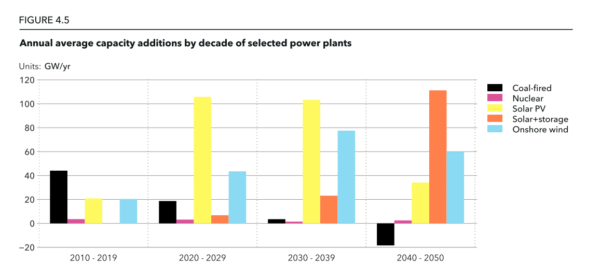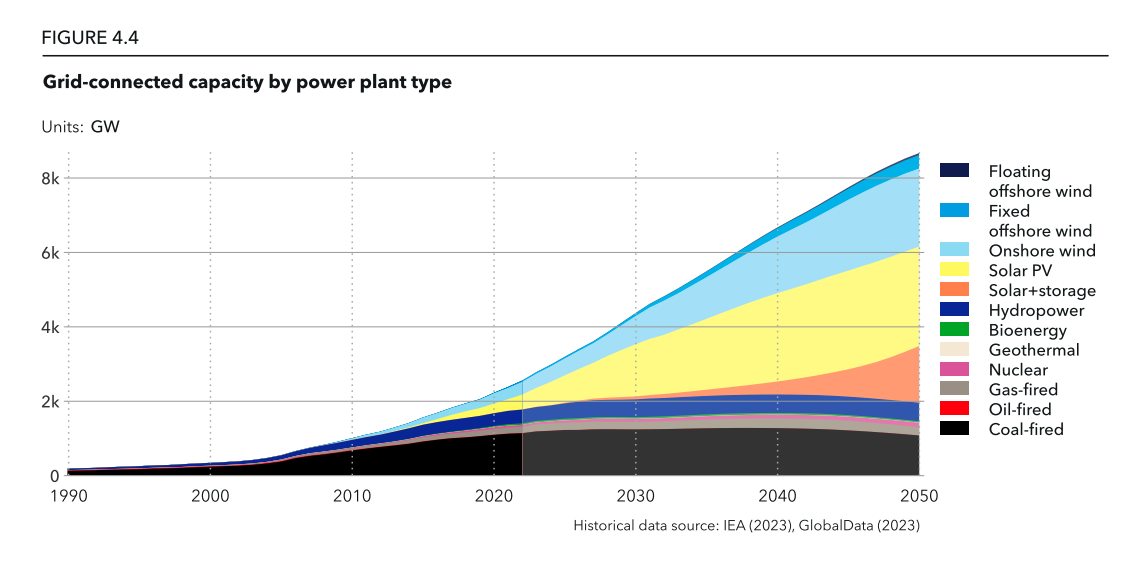China is set to reach 5.5 TW of solar by 2050, according to forecasts by Norwegian risk-assessment specialist DNV in its latest report, “Energy Transition Outlook China 2024.”
The figure includes 3.9 TW of solar and 1.6 TW of solar-plus-storage. DNV said the growth will be driven by the low cost of solar energy and ongoing policy support.
China’s total grid-connected installed capacity is expected to reach 6.7 TW by 2040 and 8.7 TW by 2050. Renewables are set to command a 88% market share by 2050, with the country expected to more than quintuple its renewable energy installations from today. In 2050, solar is expected to account for 38% of all electricity produced in China, roughly 14-fold higher than today’s levels.
The analysts predict solar will continue to annually lead renewables development for the rest of this decade and the next, with more than 100 GW of additional PV expected every year up to 2039. Through the 2040s, DNV said that solar-plus-storage solutions will likely become the favored technology, with around 110 GW to be installed every year. By 2050, it said it expects 34% of China’s solar to be combined with storage applications – mostly batteries.

The report said the levelized cost of electricity (LCOE) for solar is currently around $39/MWh, but it is almost twice as much for solar-plus-storage, at $75/MWh. By 2050, DNW expects the LCOE to be as low as $24/MWh for solar and $44/MWh for solar-plus-storage, due technological innovation and lower investment costs.
“As more and more solar PV comes into the power system, the price cannibalization effect becomes apparent, and the price solar electricity garners starts reducing,” the report said. “Over time, solar-plus-storage becomes a profitable option for developers, which is also reflected in increasing net capacity additions of solar-plus-storage, in absolute numbers and when compared to solar PV.”
The continued growth of solar will be accompanied by a corresponding decrease in fossil-fuel generation, which is predicted to drop from 66% today to 7% in 2050. Other non-fossil sources, including wind, will account for almost 55% of the energy mix.
“In other words, by 2050, we expect substantial transformation of China’s energy mix from fossil dominated to a much cleaner one,” said DNV.
Earlier this week, China's National Energy Administration (NEA) said that the nation's cumulative PV capacity has surpassed 660 GW, with more than 47 GW of solar added in the first three months of this year.
This content is protected by copyright and may not be reused. If you want to cooperate with us and would like to reuse some of our content, please contact: editors@pv-magazine.com.




4 comments
By submitting this form you agree to pv magazine using your data for the purposes of publishing your comment.
Your personal data will only be disclosed or otherwise transmitted to third parties for the purposes of spam filtering or if this is necessary for technical maintenance of the website. Any other transfer to third parties will not take place unless this is justified on the basis of applicable data protection regulations or if pv magazine is legally obliged to do so.
You may revoke this consent at any time with effect for the future, in which case your personal data will be deleted immediately. Otherwise, your data will be deleted if pv magazine has processed your request or the purpose of data storage is fulfilled.
Further information on data privacy can be found in our Data Protection Policy.